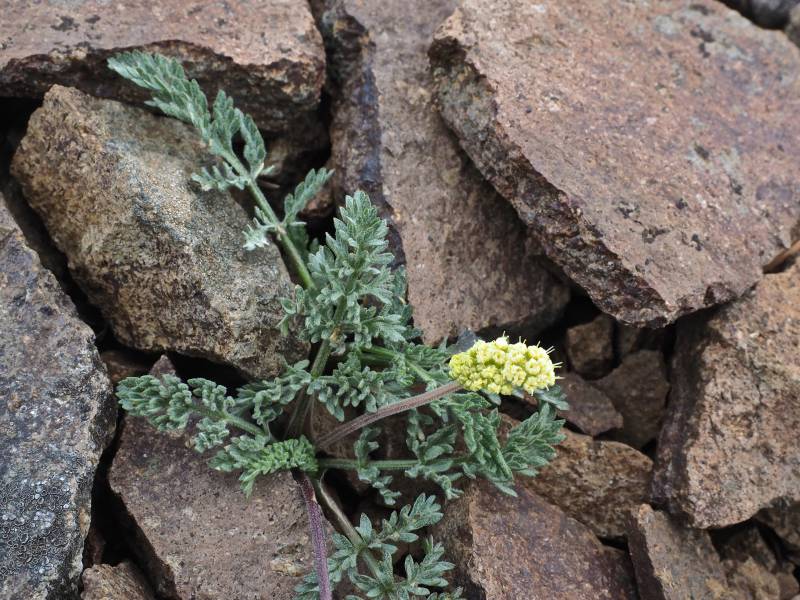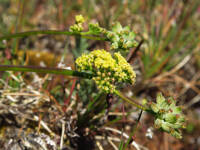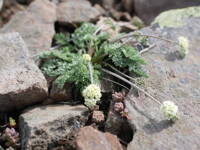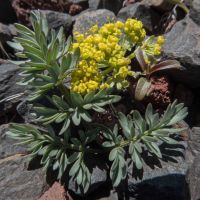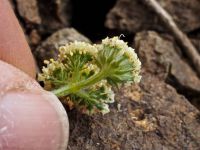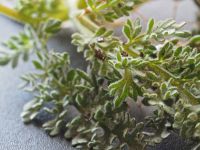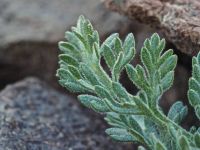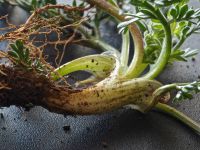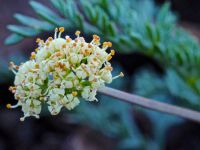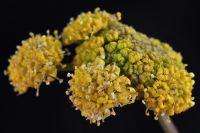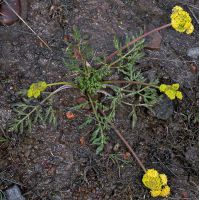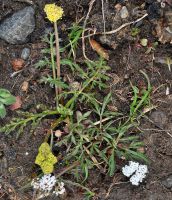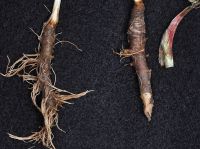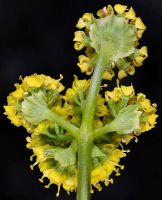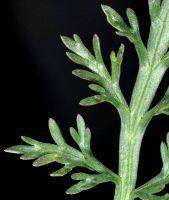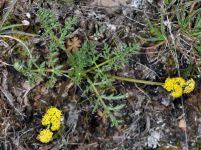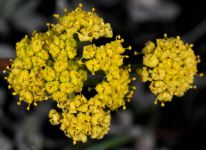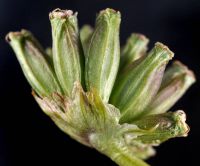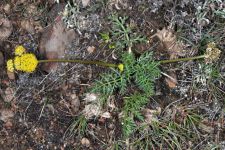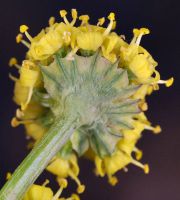Distribution: Occurring east of the Cascades crest in central and south-central Washington; central Washingotn to Wasco County, Oregon.
Habitat: Open hillsides, often with sagebrush, from valleys to subalpine.
Flowers: May-July
Origin: Native
Growth Duration: Perennial
Conservation Status: Not of concern
Pollination: Bees, flies, butterflies, beetles, wasps
Perennials with an elongate, thickened taproot, the plants acaulescent.
Leaves attached to the top of the tuberous taproot, pinnately or ternate-pinnately divided, the leaf segments narrow, 1-5 mm. long
Rays of the umbel 5-20, elongating unequally; flowers yellow; involucel of broad bracklets which are fused from about halfway nearly to the tip, cup-like; pedicels short, 1-3 mm. long.
Fruit usually finely puberulent, ovate, 6-7 mm. long and about half that wide, the wings less that half as wide as the body.
The smaller size and cuplike involucels distinguish it from the similar L. cous.
Publication: Contr. U.S. Natl. Herb. 7(1): 211. 1900.
PNW Herbaria: Specimen records of Lomatium watsonii in the Consortium of Pacific Northwest Herbaria database.
WA Flora Checklist: Lomatium watsonii checklist entry.
OregonFlora: Lomatium watsonii information.
E-Flora BC: Lomatium watsonii atlas page.
CalPhotos: Lomatium watsonii photos.
USDA Plants: Lomatium watsonii information.


